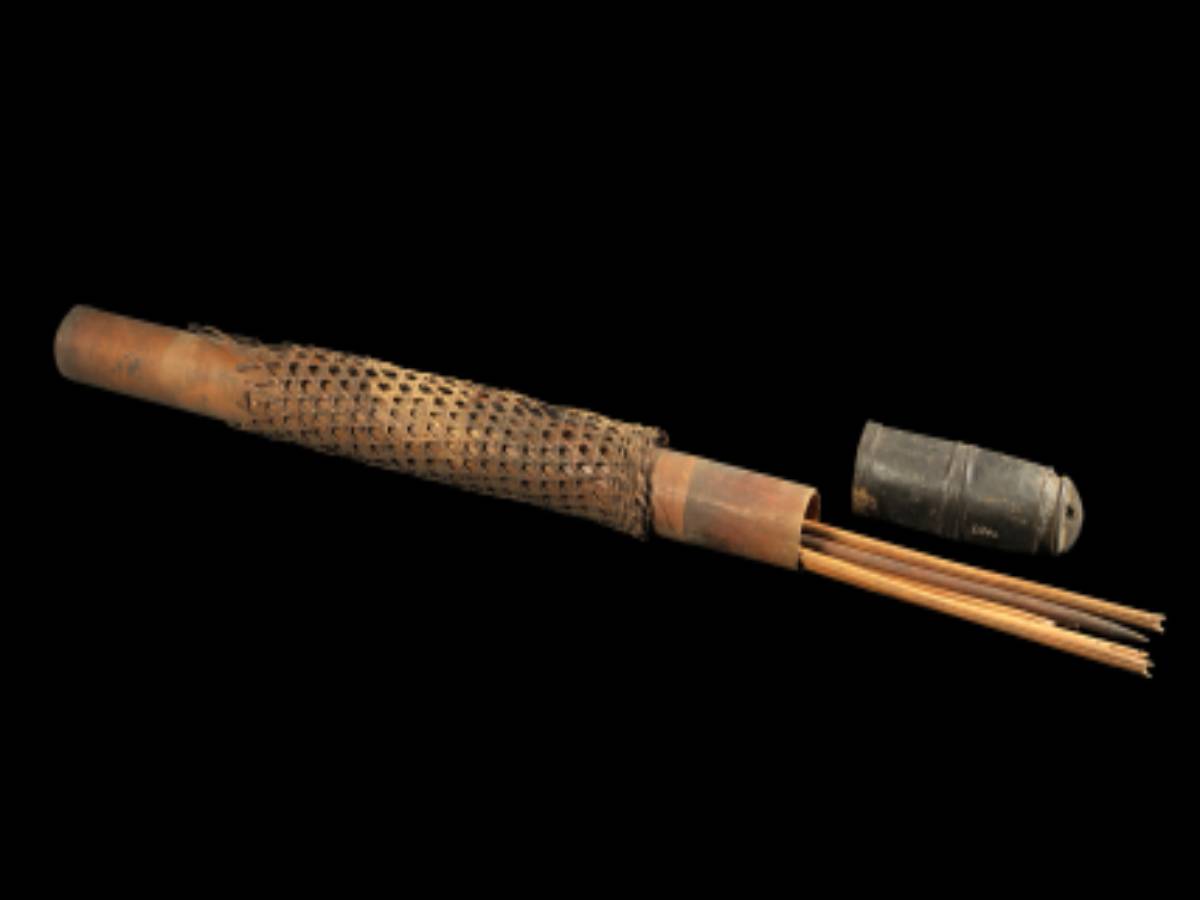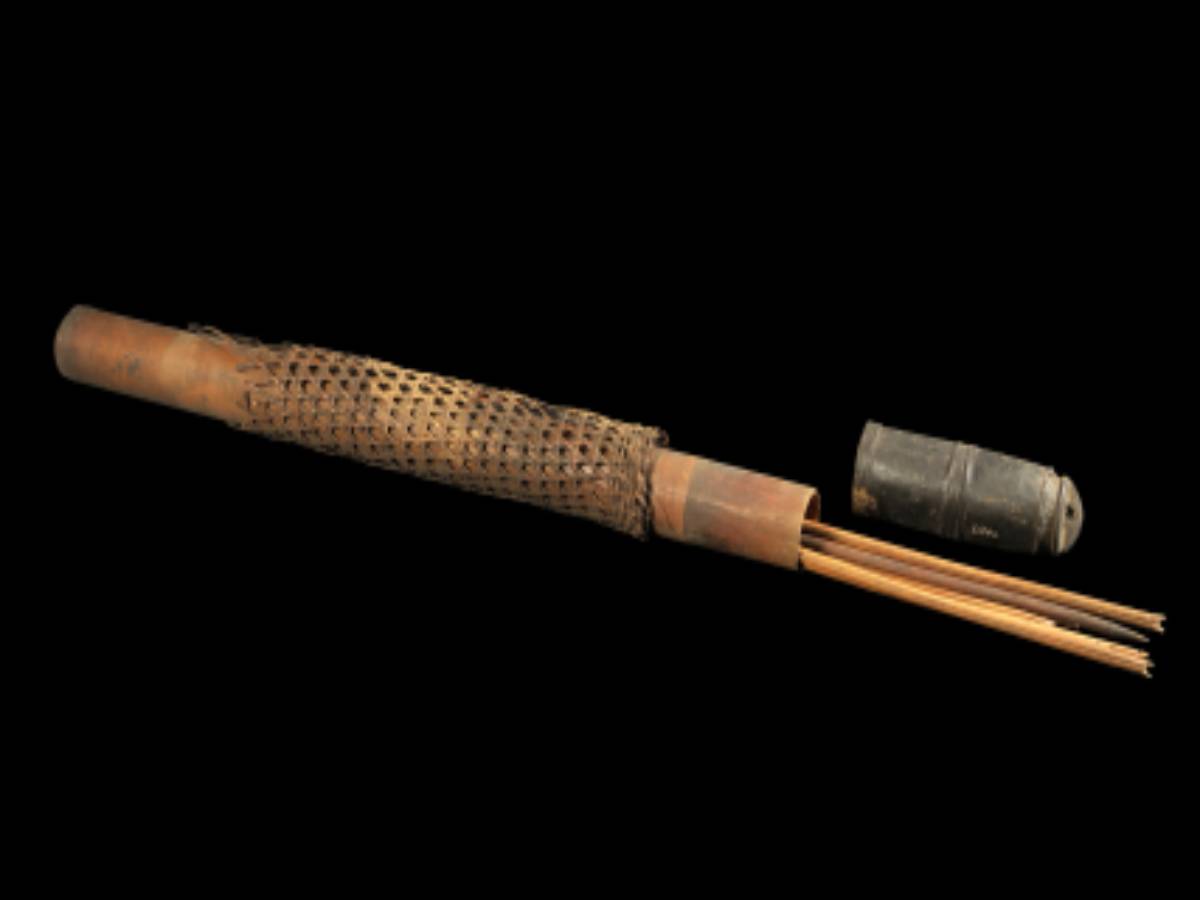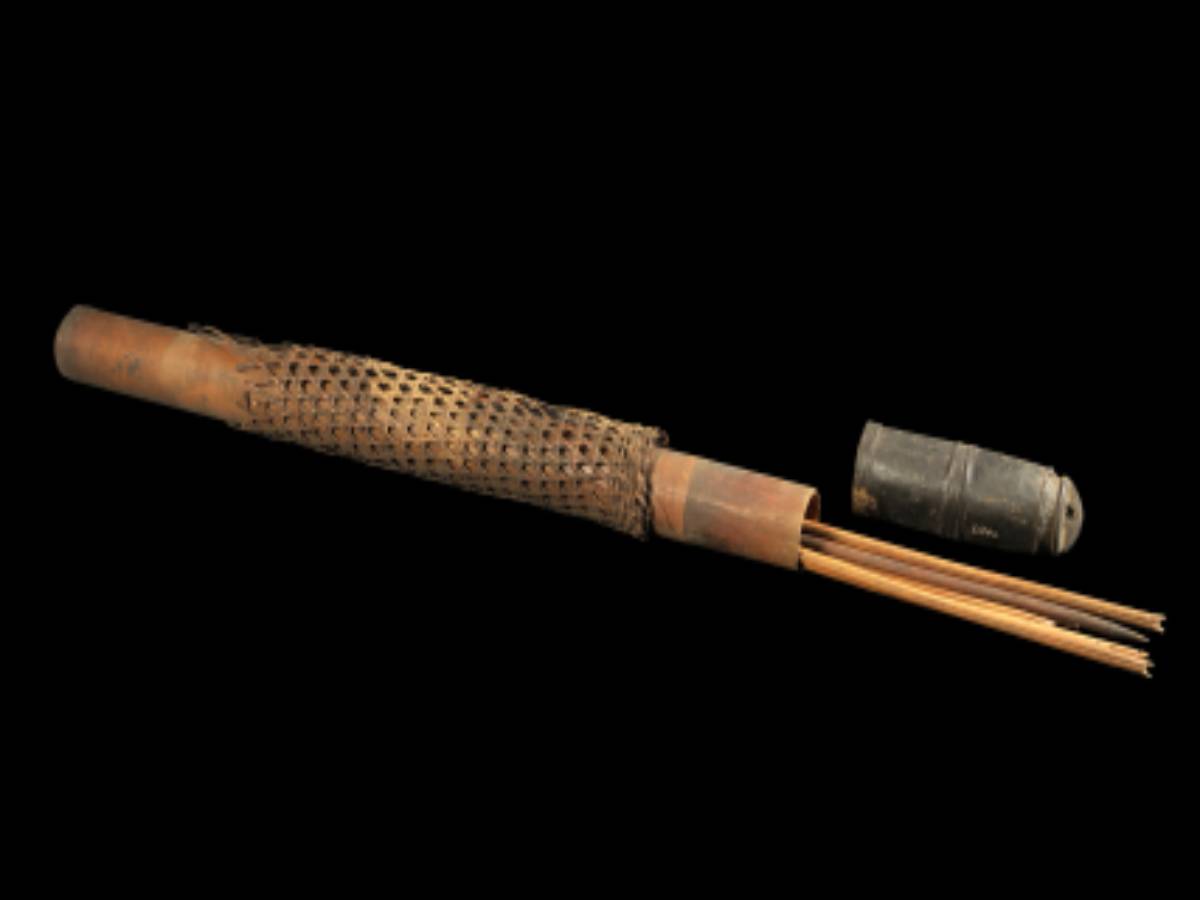State
Tribe Name
Art Type
short description
This quiver is an old one and belongs to the Kuki tribe of Manipur; it is a perfect example of functional art in the indigenous sense of weaponry. The quiver is made from a long cylindrical hollow portion of bamboo, while the cylindrical and hollow blackish bamboo lid augments it. The upper portion of the lid is a round top with a semicircular extension with a perforation in the center for possible hanging or tying. Seven arrows are arranged inside the quiver, an example of the tribal style of organizing and transporting ammunition for purposes of hunting and defense. The main body of the quiver is elegantly wrapped in a cane strip netting which provides durability and grip, serving the aesthetic appeal as well. Very noteworthy is the upper lid, which is not only functional but expresses a concern for detail and aesthetic sense.
Thumbnail

Filter Postion
Left
Filter Background
Off
Theme
Filter Header Image

content
Image

description
This quiver is an old one and belongs to the Kuki tribe of Manipur; it is a perfect example of functional art in the indigenous sense of weaponry. The quiver is made from a long cylindrical hollow portion of bamboo, while the cylindrical and hollow blackish bamboo lid augments it. The upper portion of the lid is a round top with a semicircular extension with a perforation in the center for possible hanging or tying. Seven arrows are arranged inside the quiver, an example of the tribal style of organizing and transporting ammunition for purposes of hunting and defense. The main body of the quiver is elegantly wrapped in a cane strip netting which provides durability and grip, serving the aesthetic appeal as well. Very noteworthy is the upper lid, which is not only functional but expresses a concern for detail and aesthetic sense.
This bamboo quiver was functional as a container during hunting for the tribal and a symbol of culture. It reflects that the construction had used local materials and represented the Kuki's skill in making lightweight and effective implements suitable to the forest terrain. Such objects preserve the memory of tribal artisanship and their affinity with nature.
This bamboo quiver was functional as a container during hunting for the tribal and a symbol of culture. It reflects that the construction had used local materials and represented the Kuki's skill in making lightweight and effective implements suitable to the forest terrain. Such objects preserve the memory of tribal artisanship and their affinity with nature.
Image Mode
landscape
promoted
Off
Verified
Off
